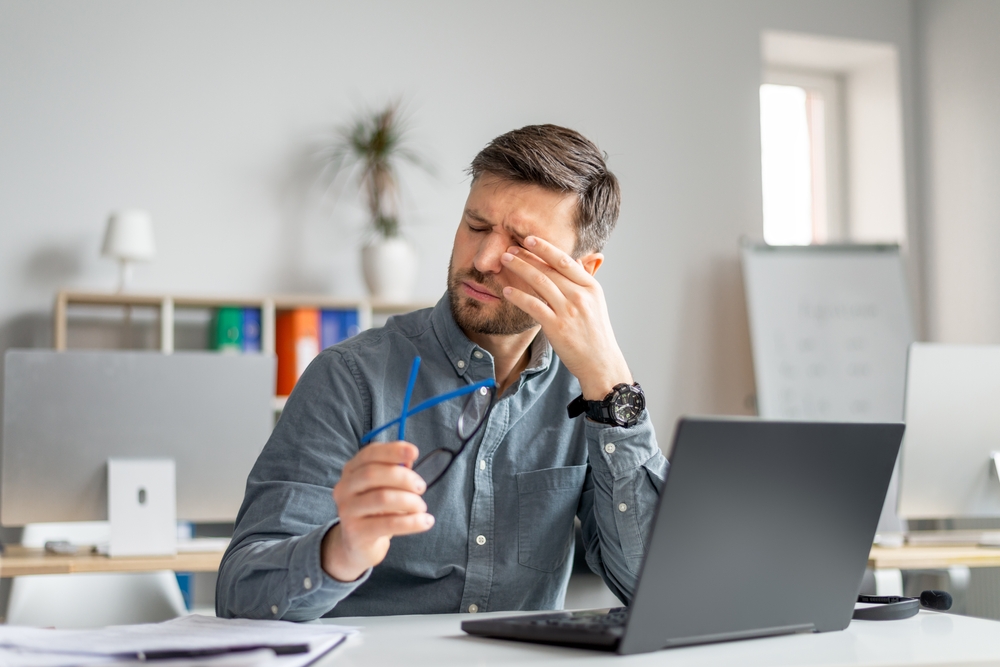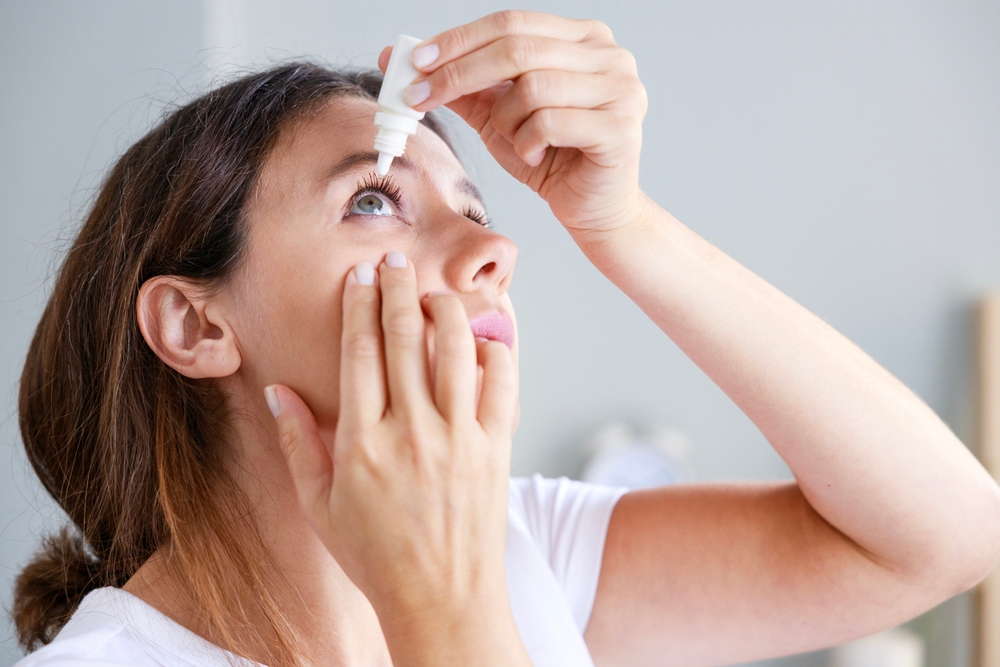Dry eye syndrome is a common and often frustrating condition that affects millions of people worldwide. While eye drops are a popular and readily available solution, many people wonder if there are alternative ways to address this issue.
Keep reading to learn more about dry eye, its causes, and various treatment options beyond the use of eye drops!
What is Dry Eye?

Dry eye is more than just a fleeting moment of discomfort. It’s a chronic condition where your eyes fail to produce enough tears or the quality of your tears is insufficient to keep your eyes adequately lubricated.
This can lead to a range of uncomfortable symptoms, including:
- A stinging or burning sensation in your eyes
- A feeling of grittiness, as if there’s sand in your eyes
- Redness and irritation
- Blurred vision that may worsen as the day progresses
- Light sensitivity
- Difficulty wearing contact lenses
These symptoms can significantly impact your daily life, making simple tasks like reading, working on a computer, or driving more challenging.
What Causes Dry Eye?
Dry eye can stem from various factors, and often, it’s a combination of multiple causes that lead to this condition. However, a few common causes of dry eye are:
Age
As you grow older, your tear production naturally decreases. This is why dry eye is more prevalent among older adults.
Hormonal Changes
Fluctuations in hormone levels, particularly in women during pregnancy or menopause, can affect tear production.
Environmental Factors
Dry, windy, or smoky environments can increase tear evaporation, leading to dry eye symptoms.
Screen Time
Prolonged use of digital devices often reduces our blink rate, which is crucial for spreading tears across the eye’s surface.
Certain Medical Conditions
Autoimmune diseases like rheumatoid arthritis and Sjögren’s syndrome can affect tear production.
Medications
Some medications, including antihistamines, decongestants, and antidepressants, can decrease tear production as a side effect.
Understanding these causes is crucial because effective treatment often involves addressing the underlying factors contributing to your dry eye symptoms.
How Do Eye Drops Help With Dry Eye?

Eye drops, also known as artificial tears, are often the first line of defense against dry eye. They work by supporting natural tear film, providing additional lubrication to the surface of your eye.
This extra moisture can help alleviate the discomfort associated with dry eye and protect your eyes from further irritation. There are various types of eye drops available, ranging from simple saline solutions to more complex formulations that mimic the composition of natural tears.
Some contain preservatives to extend their shelf life, while others are preservative-free to minimize the risk of irritation for those with sensitive eyes. Eye drops can be beneficial for immediate relief of dry eye symptoms.
They’re easy to use, easily available, and can provide quick comfort when your eyes feel dry or irritated. For many people with mild to moderate dry eye, regular use of artificial tears is sufficient to manage their symptoms effectively.
Will Artificial Tears Cure Dry Eyes?
While artificial tears can be highly effective in managing dry eye symptoms, it’s important to understand that they are not a cure for the underlying condition. For some people, particularly those with mild dry eye or those experiencing temporary symptoms due to environmental factors, artificial tears may be all that’s needed to keep their eyes comfortable.
However, for many others, especially those with chronic or severe dry eye, relying solely on eye drops may not provide long-term relief. This is why it’s crucial to consider other treatment options, particularly those that address the underlying causes of your dry eye.
While artificial tears can play an important role in your dry eye management strategy, they should often be part of a more comprehensive approach to treatment.
What Treatments Are There For Dry Eye?
Fortunately, there are numerous treatments available for dry eyes that go beyond the use of artificial tears. These options can help address the root causes of dry eye and provide more lasting relief.
Here are some effective treatments to consider:
Nutritional Supplements

Omega-3 fatty acids, found in fish oil or flaxseed oil supplements, can help improve the quality of your tears. Some studies have shown that increasing omega-3 intake can reduce dry eye symptoms.
Warm Compresses and Eyelid Hygiene
Applying warm compresses to your eyes can help unclog oil glands in your eyelids, improving the quality of your tears. Gentle eyelid massage and regular cleansing of your eyelids can also be beneficial, especially if you have a condition called meibomian gland dysfunction.
Prescription Medications
Your eye doctor might prescribe medications like Restasis or Xiidra, which work to increase your natural tear production. These can be particularly helpful for individuals with chronic dry eye.
OptiLight
This innovative treatment uses precise light pulses to target the area around the eyes, potentially improving meibomian gland function and overall tear quality.
It’s important to note that the most effective treatment plan often involves a combination of these approaches. What works best can vary significantly from person to person, depending on the underlying causes and severity of their dry eye.
Are you experiencing symptoms of dry eye? Schedule an appointment at Blaine Eye Clinic in Blaine, MN, today!





